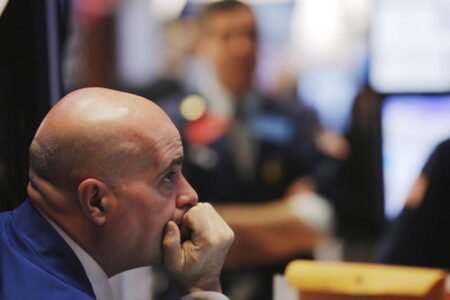By Tim Hepher, David Shepardson and Rachel More
FARNBOROUGH, England (Reuters) – A humbled aerospace industry holds its annual festival next week struggling to meet demand because of a crisis inside its plants.
For decades a venue for planemakers led by Airbus and Boeing (NYSE:) to boast about billions of dollars of orders, the July 22-26 Farnborough Airshow is likely to be overshadowed by growing airline frustration over plane shortages and delays.
Carriers like Japan Airlines are said to be close to firming up recent tentative orders, and Qatar Airways, Korean Air and Turkish Airlines have all said they are shopping for jets.
But, despite some deals, concerns about supply chains and factory performance are set to eclipse the usual triumphalism.
“The entire market has suffered supply chain issues,” Saleh Eid, vice-president of fleet management at Saudia Airlines, told Reuters inside a factory in Germany that is due to help build 105 newly ordered Airbus jets for the Gulf carrier.
Boeing in particular is expected to adopt a muted tone as it wrestles with a corporate crisis following the mid-air blowout in January of a door plug blamed on missing bolts.
Outgoing CEO Dave Calhoun will not attend for a second year and industry bible Aviation Week bemoaned what it called a “leadership vacuum”, though divisional leaders will all be present. Nor is the company displaying its own planes this time.
A Boeing spokesperson referred to an earlier statement that it had tailored its presence to focus on safety and quality.
Airbus will thin its presence to cut costs, delegates said.
After widespread quality snags such as poorly tightened bolts, some say the appetite is for more torque and less talk.
“It’s not the best time to roll out lots of orders; it is about improving things in the factory,” one delegate said.
Aviation was hit hard by the pandemic which saw air travel collapse only to bounce back sharply. That has left many firms scrambling to resolve labour and parts shortages. By the time they recover, the juiciest part of the business cycle may be running out, said Agency Partners analyst Nick Cunningham.
“In the past the issue has always been one of demand, about how long is the cycle going to last. Now the issue is about getting the boxes out of the door.”
Critics say the industry has itself to blame after squeezing suppliers.
“They are realising that securing a big chunk of the supply chain and giving it the resources it needs is a precursor to doing the ramp-up,” Aerodynamic Advisory Managing Director Richard Aboulafia said.
Planemakers do have something to celebrate, with Boeing’s delayed 777X starting certification test flights and Airbus winning approval for its A321XLR.
But competitors like China’s Comac, Brazil’s Embraer and the futuristic curved Jet Zero are alert for opportunities.
FIGHTER PLANS
The biennial event in southern England, which alternates with the Paris Airshow, is also expected to offer contrasting pictures of global affairs. Air travel is growing as societies and people connect and do business, with a record five billion trips forecast this year.
But rising geopolitical tensions are stoking demand for weapons and fuelling trade tensions that can hurt air travel.
“There is still some euphoria post-COVID, but it is somewhat disconnected from the geopolitical situation,” said industry adviser Bertrand Grabowski.
The vulnerability of airlines to setbacks was underscored on Friday when a global cyber outage caused airport chaos and hundreds of flight cancellations, on top of scarce jet capacity.
The defence side of the show will focus on Ukraine, possible delays to America’s future F-22 fighter replacement, code-named NGAD, and a defence review by Britain’s new Labour government.
“The new (UK) ministerial team will be lobbied by all the defence companies to make sure their equipment is top of the ideas pile,” said Alex Walmsley, associate fellow of UK think-tank RUSI.
That may not cut much ice with the head of the Royal Air Force.
“It should be a focus on speed, productivity and creativity that we prioritise, not those who lobby loudest,” Air Chief Marshal Richard Knighton told a conference on Thursday.
The value of cheap and effective drones has been proven in Ukraine, and they will remain part of future planning, he said.
But the re-emergence of big-power rivalries has focused attention on the most sophisticated systems including NGAD’s concept for fighters teamed up with swarms of drones.
That will also be on the minds of top brass at the world’s largest military air show: the July 19-21 Royal International Air Tattoo, where fighter aces come once a year to showcase air power and shatter the rural calm of England’s Cotswolds.
Among the VIPs will be U.S. Air Force Secretary Frank Kendall. In an interview with Aviation Week in June, he appeared to cast doubt on the future of NGAD over costs.
Weeks later, he told Defense News that NGAD’s family-of-systems concept was “alive and well” though could be cheaper.
Britain is in one of two groups exploring similar crewed-uncrewed systems, designed to throw lethal mass at adversaries.
BAE Systems (LON:) is co-operating with partners in Italy and Japan to build a system called GCAP, while France, Germany and Spain are pushing a similar Future Combat Air System, also known by the French initials SCAF.
“I think (the UK review) is positive for GCAP because the new government has made clear that international co-operation on security is one of its key priorities,” Walmsley said.
Others speculated any NGAD delays would give Europeans an excuse to re-examine their options and test political support.
“Europe is following the tail lights of NGAD and the brakes are coming on,” said a European defence industry source.
Read the full article here

















